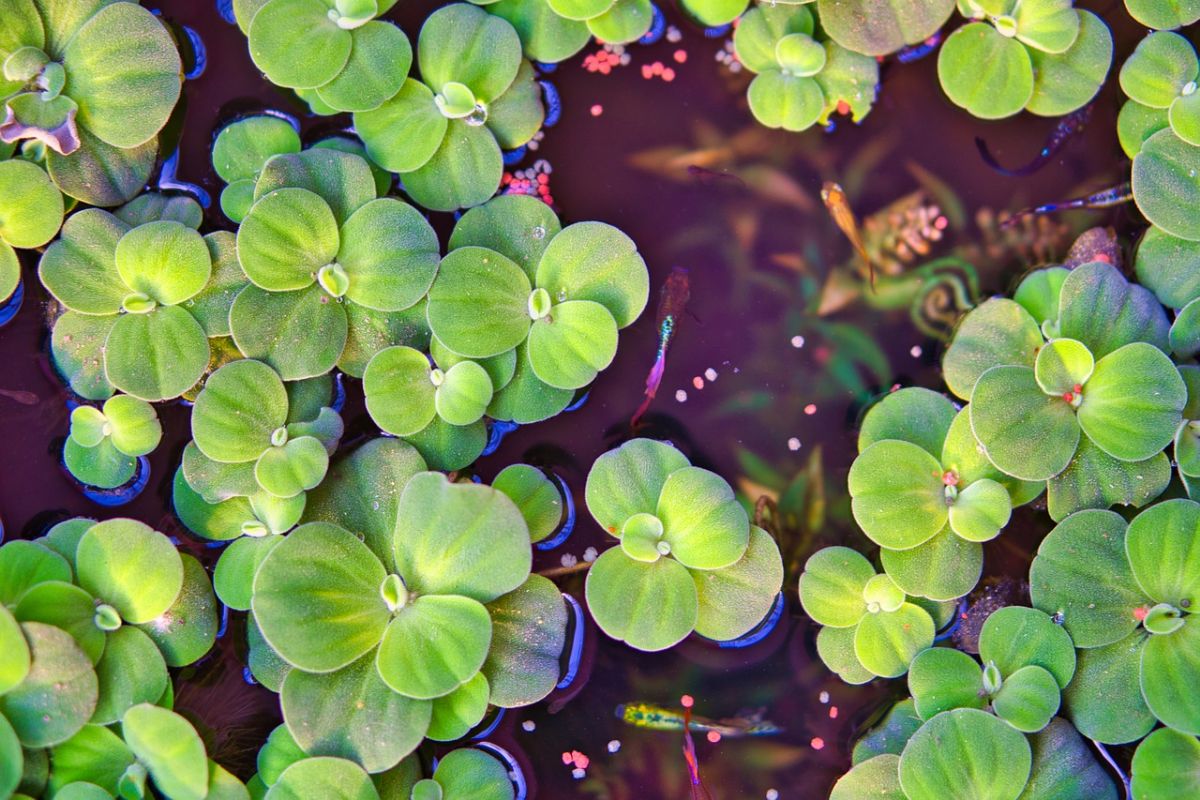
Within the plant kingdom, one that we always pay attention to when we have fish is floating aquarium plants. However, there are many who, after having them, even when the fish are not there, continue to maintain the aquarium due to the beauty that these plants offer.
Therefore, this time we want to talk to you about several aquarium floating plants, which you can have either alone or with some species of fish (not all, since there are some that these animals do not tolerate). Do you want to know which ones we recommend?
Ceratophyllum submersum
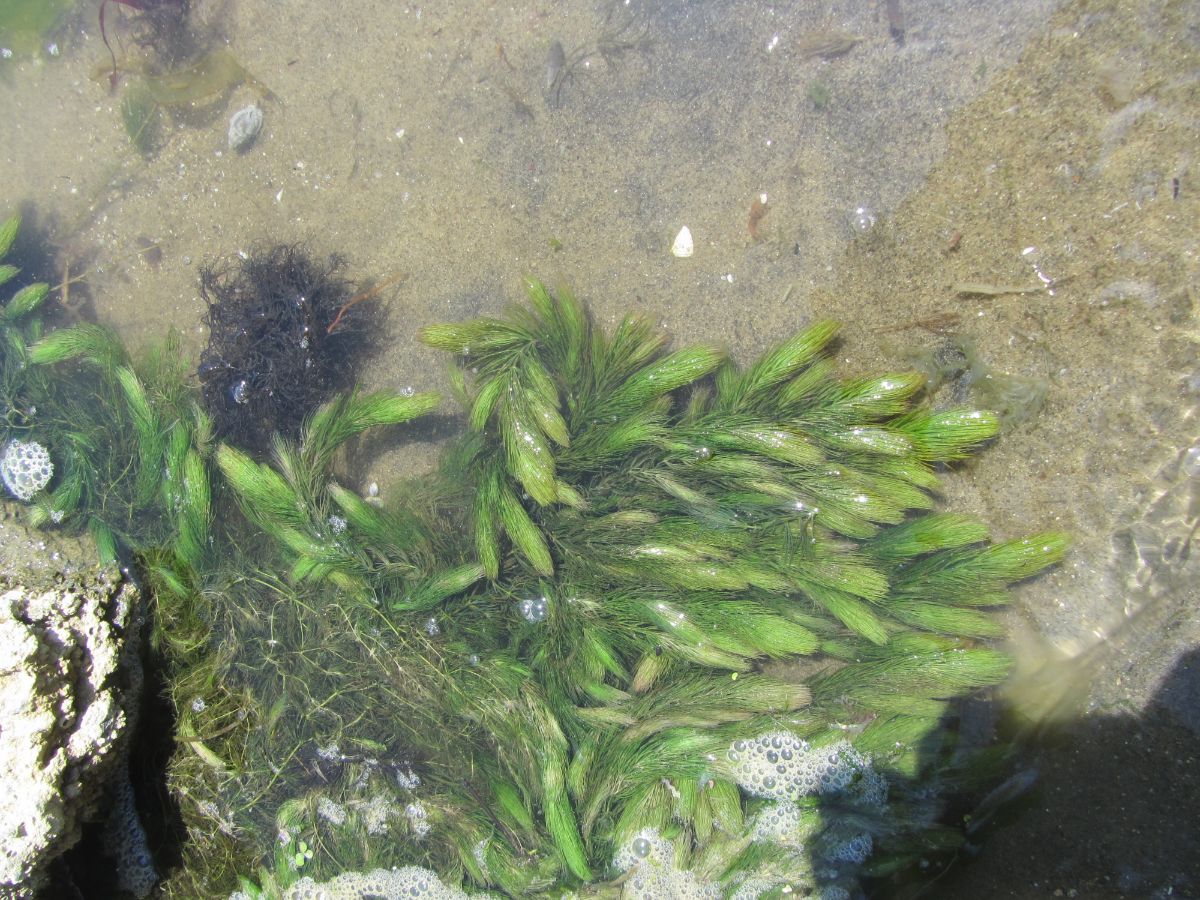
This aquarium plant is one of the best known, even for ponds. It is ideal for raising fish because help to clean the aquarium of organic debris And, incidentally, they will avoid the dreaded algae.
Of course, it prefers cold water to hot, so if you have a hot water aquarium (26-27 degrees) the safest thing is that this plant passes away.
Limnobium laevigatum
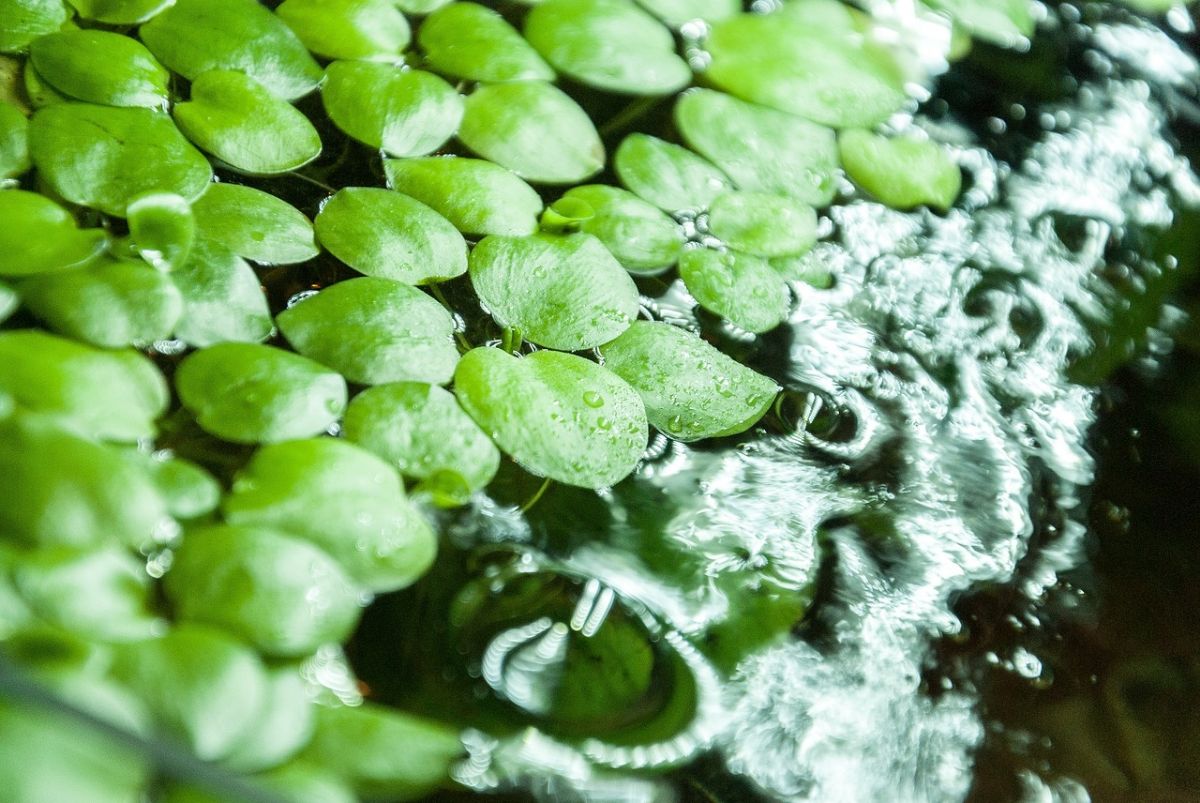
It is also known as «Amazon duckweed», and the striking thing about this floating aquarium plant is that it has floating rosette shapes, and some very practical underwater roots for fish because they help them build nests.
As for your needs, you like more or less hard waters and is ideal for herbivorous fish.
Hygroryza aristata

Within floating aquarium plants, the Hygroryza aristata It is one that will catch your eye without hesitation. For starters, it's not really a plant, but rather a herb. It is the only one used in aquariums and yes, it is very difficult to find, but not impossible.
The beauty of this one is that you will have floating roots due to the twigs it has, as well as some small white stalks that, in some moments, can easily simulate that they are flowers.
Ceratopteris cornuta
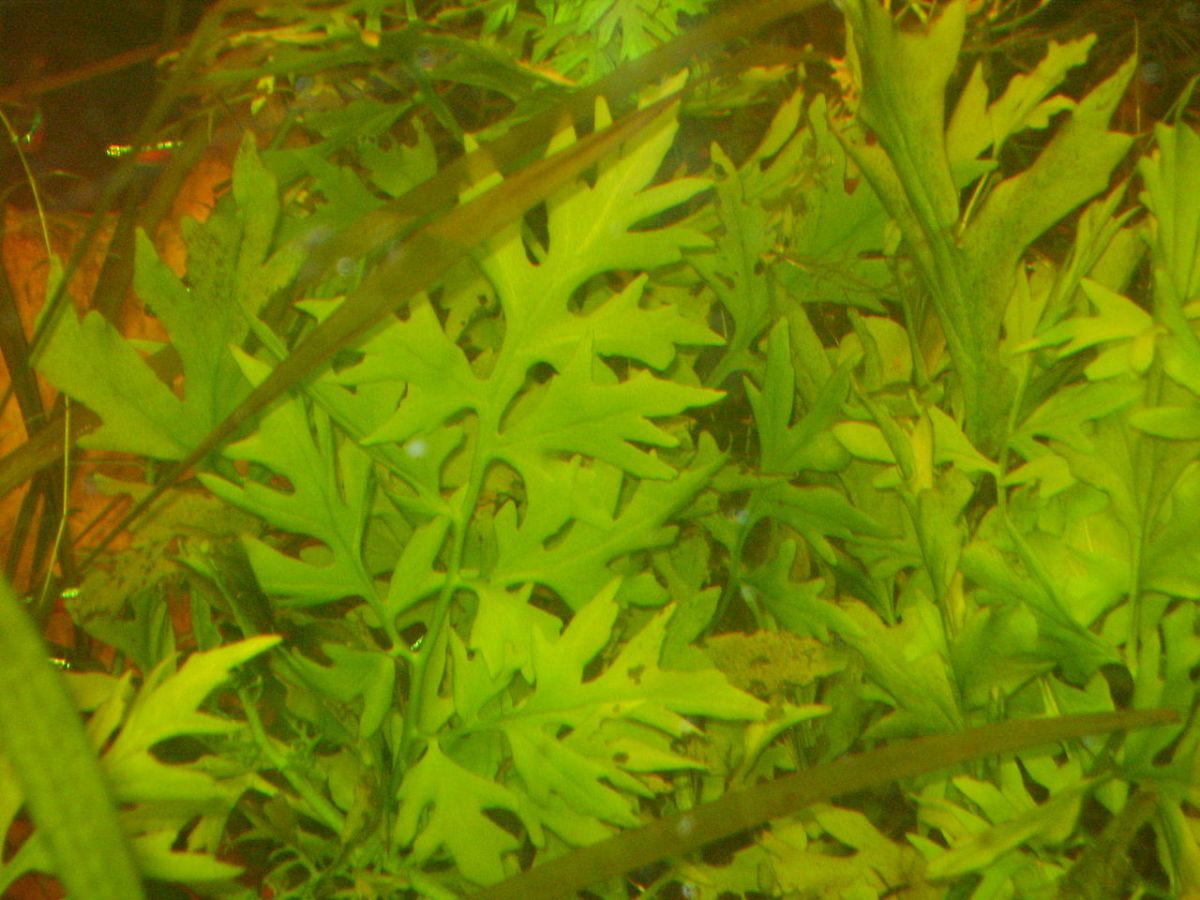
This plant is like a fern. They are the most recommended floating aquarium plants for beginners, both in aquariums and in aquatic plants. It is fast growing, so do not be surprised that in a short time you have to cut it so that it does not take over the entire aquarium.
Yes, those shoots that you cut can be replanted, making the plant appear much broader.
Two negative aspects: it is a consumer of nitrates and, in addition, it is necessary to leave free spaces on the surface so that it can develop well. If the water and the lid are too close together, the plant will suffer.
Mimosa amphibian
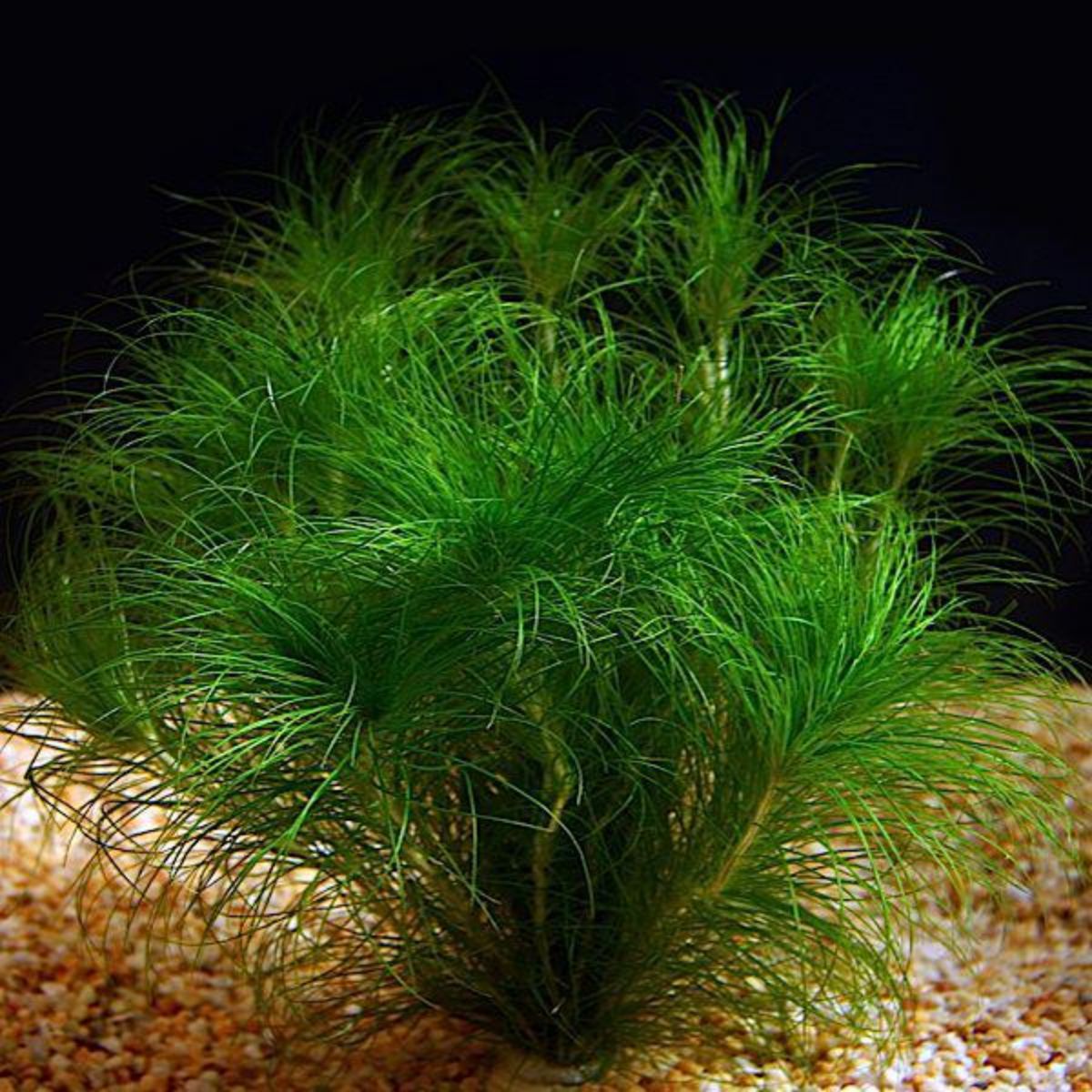
Source: Aquarium Plants
This is one of the floating aquarium plants that will surprise you. And it is that, when you plant it, you may notice it strange, perhaps dull and lifeless. But actually, when a couple of days go by, you start to open the leaves and you find yourself with a beauty.
Now, we also warn you that it is quite difficult to maintain, so not recommended for beginners. And is that it does not tolerate low temperatures and does not like places where there is running water. In return, you will have a plant with a curiosity: if you touch it, the leaves will close. The same will happen at night. Only the flower they put out will stay open (which, by the way, is yellow).
Trap natans

Also known as water chestnut or water caltrop, This plant native to Eurasia and Africa tolerates temperatures between 18 and 28 degrees, with a pH of between 6 and 8 degrees. It does not have much maintenance, although its difficulty is medium, which makes it not suitable for beginners.
Aesthetically, you will have a plant that brings to the surface some very characteristic leaves, with serrations and of a medium size.
Ceratophyllum demersum
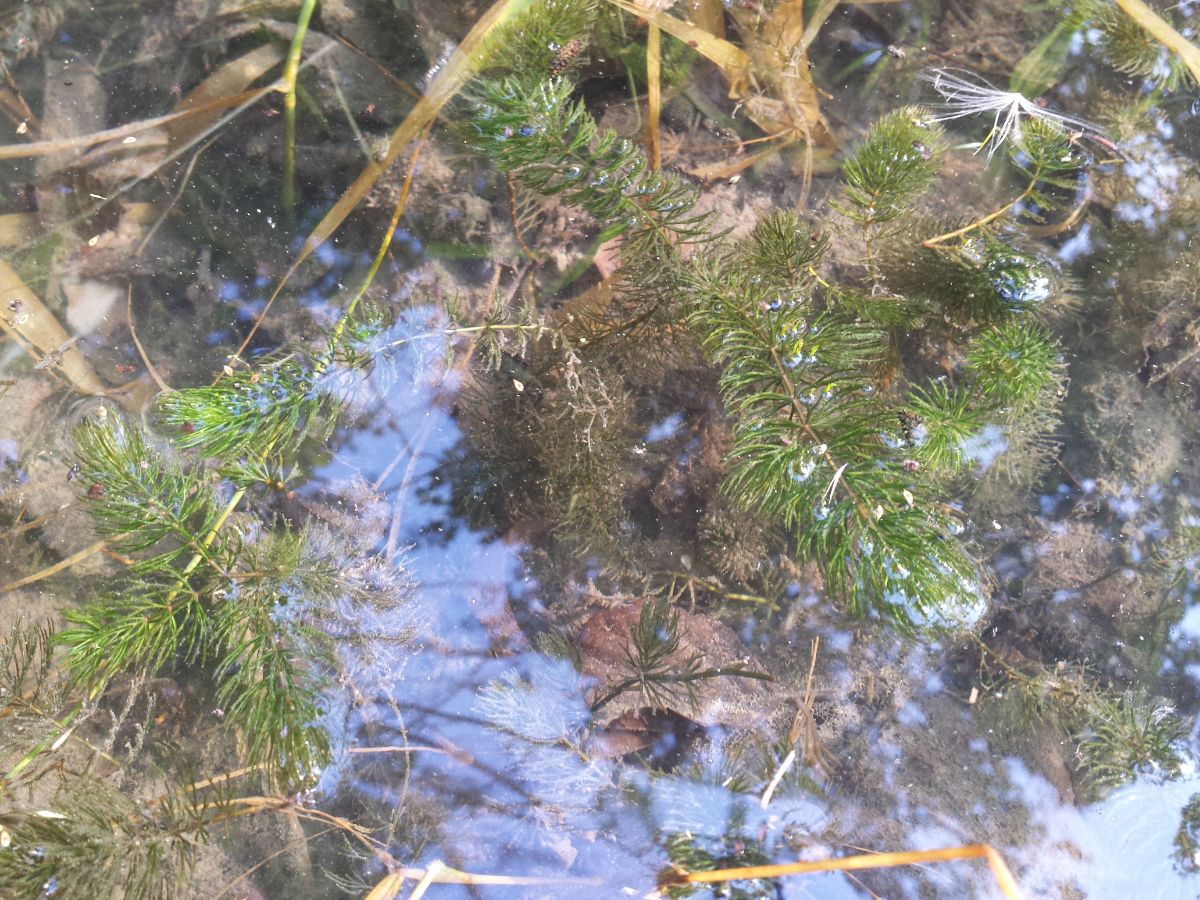
Also called "Foxtail", this plant is one of the fastest growing plants (to give you an idea, it could grow up to 4cm a day). It is perfect for beginners because its maintenance is minimal.
Also, you have to know that it has no roots, and you can plant it or let it behave in a floating way. The good thing about this plant for the aquarium is that it oxygenates the water, in addition to helping you avoid the appearance of algae.
Phyllanthus
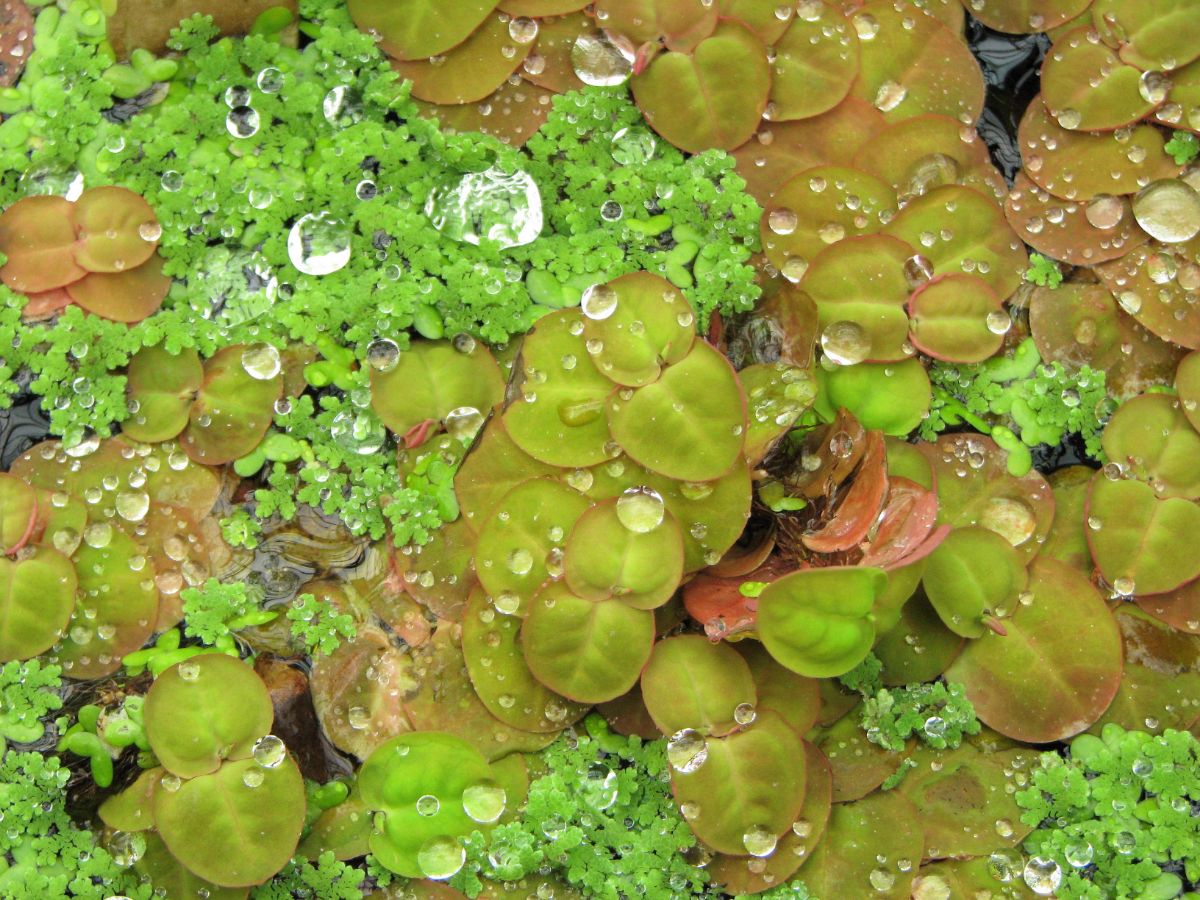
It is one of the floating aquarium plants that stands out for its pale green color. But don't be fooled, because it can go from green to garnet red. How do you get it? Well with a medium light intensity.
It requires a little care but still could be indicated for people with an average knowledge of aquariums and floating plants.
Salvinia natans
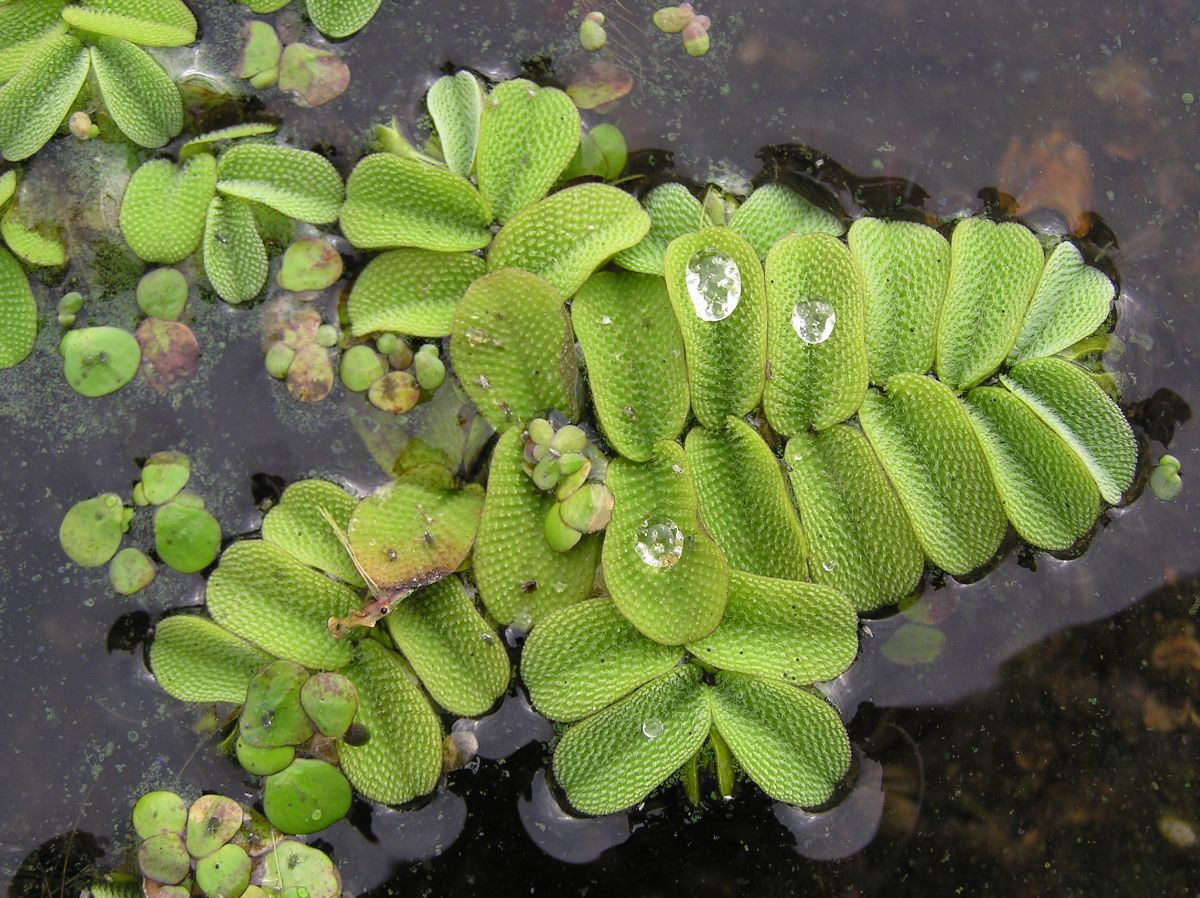
This plant is characterized by having a dark green scraped leaf, with a slit that you can see in the center of the leaf. It is for people with a medium or professional level in aquariums (and especially in floating aquarium plants).
Its growth is medium / slow, and it needs good lighting. In fact, the more light you give it, the smaller its leaves will come out.
Among the benefits you get with it is absorbing excess nutrients, avoiding the appearance of algae, and serving as a breeding ground for viviparous fish, or as protection, for example for Betta fish.
Riccia fluitans
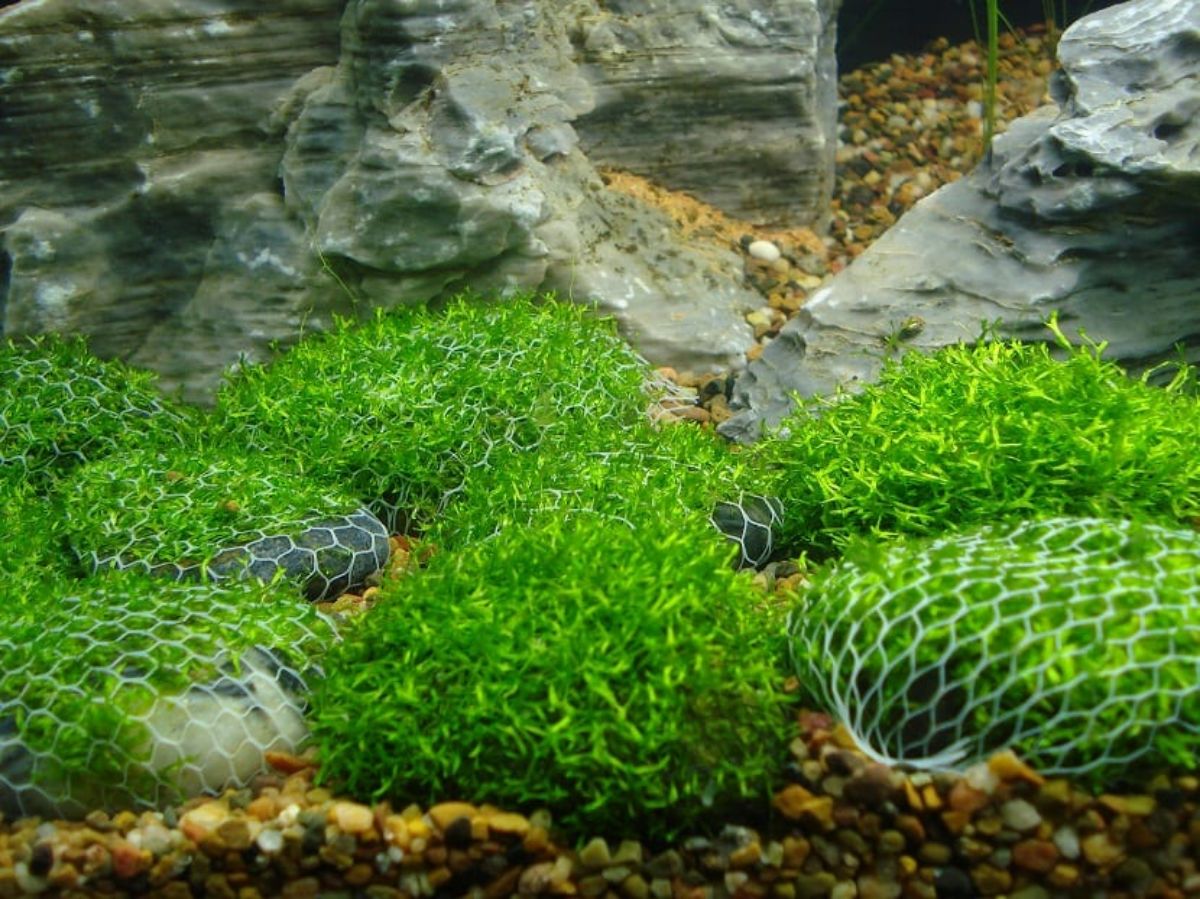
As we have told you with these, this is one of the ideal aquarium floating plants for beginners. It does not need to be planted, but simply tying it to a log, rock or plates is more than enough. Also, you should know that it always tells you if the plant is okay. It will if you see oxygen bubbles forming on the leaves. If that happens, you are giving him all the needs he needs, which is ideal to realize if something is not going well.
nuphar lutea
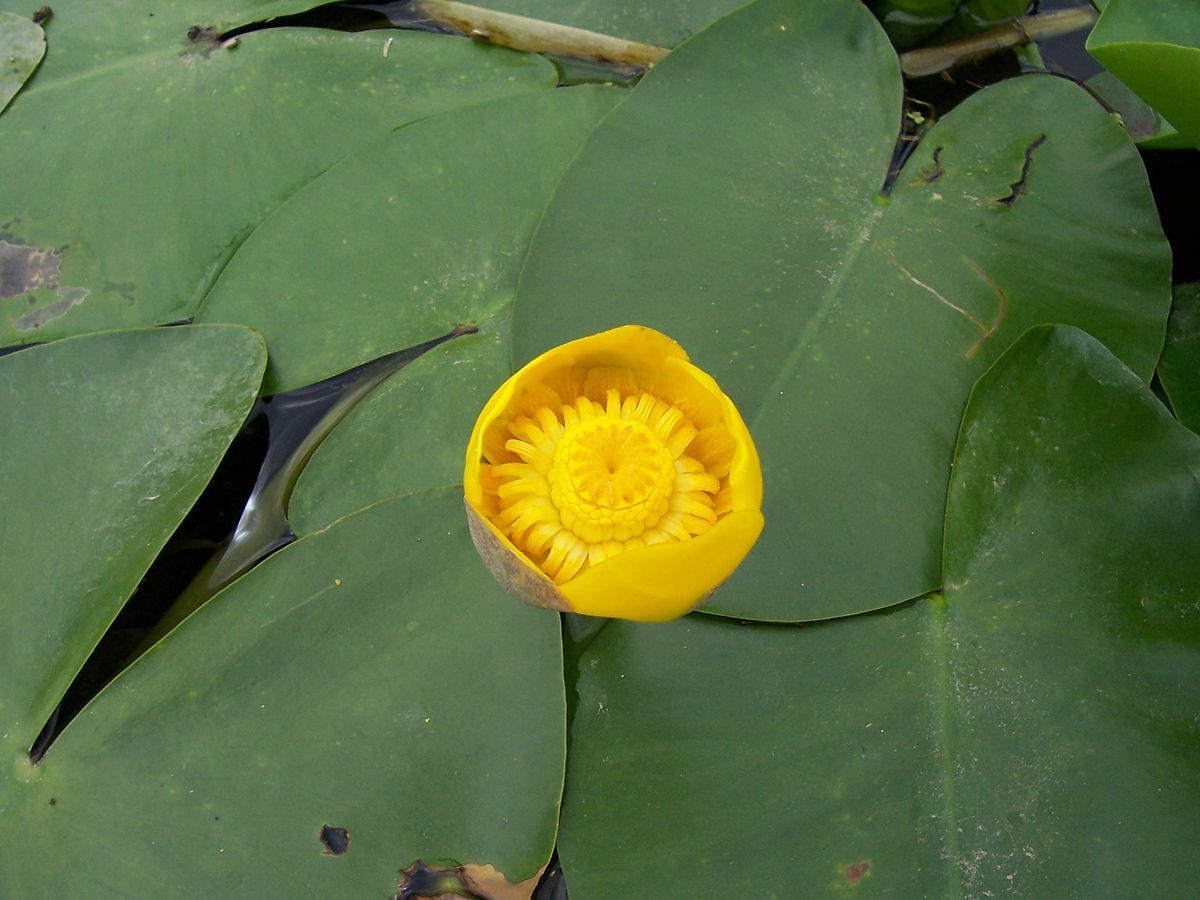
If you like floating aquarium plants that in addition to leaves also give you a flower from time to time, then this may be one of them. It is a plant known as yellow water lily or yellow nymph.
If it adapts well to its environment, and it is given the space it needs, it will sprout a very beautiful yellow flower that will remain on the surface (higher than the leaves themselves), which is why you must control the space between the aquarium lid and the water.
Did you like them? Do you recommend a more floating plant for the aquarium?